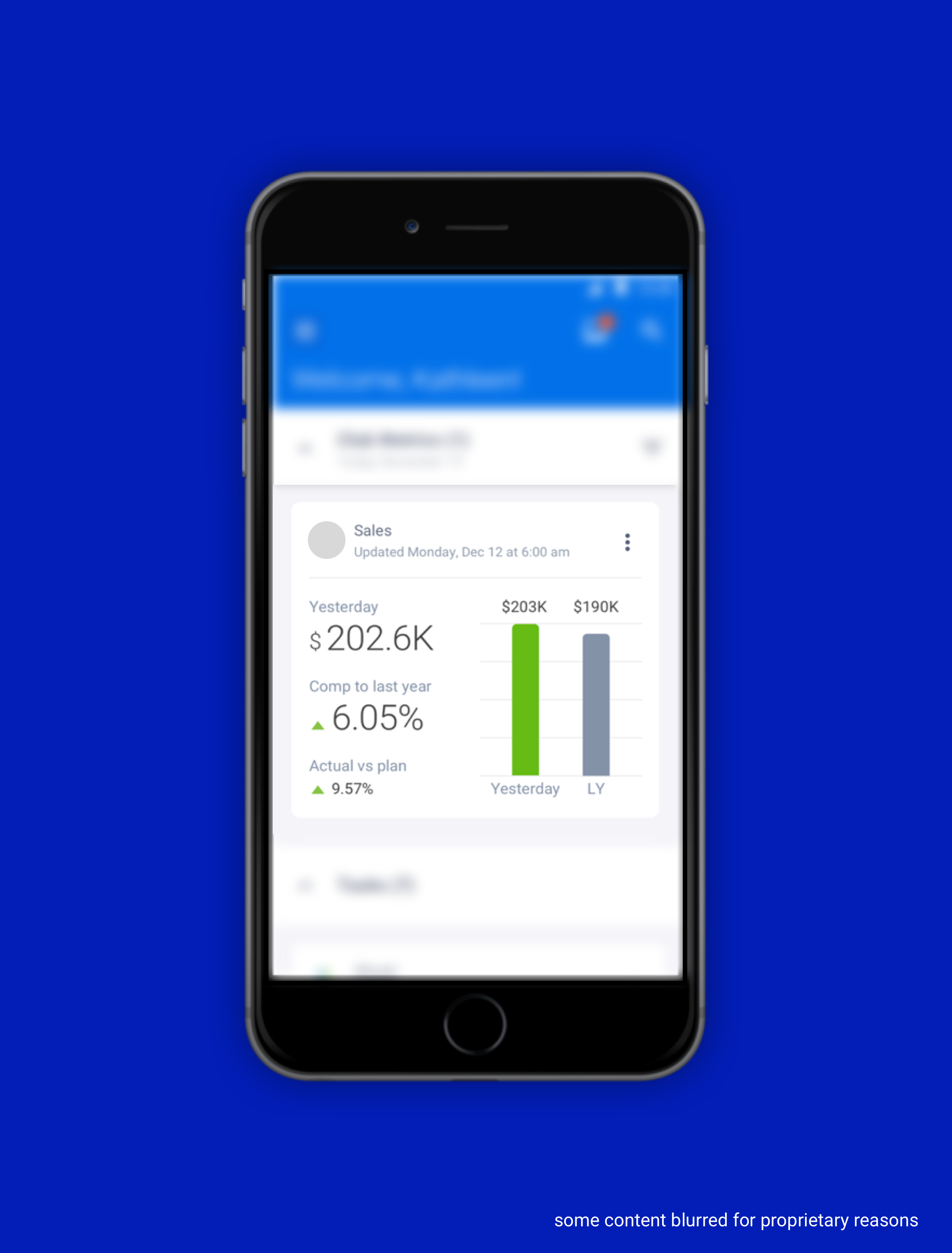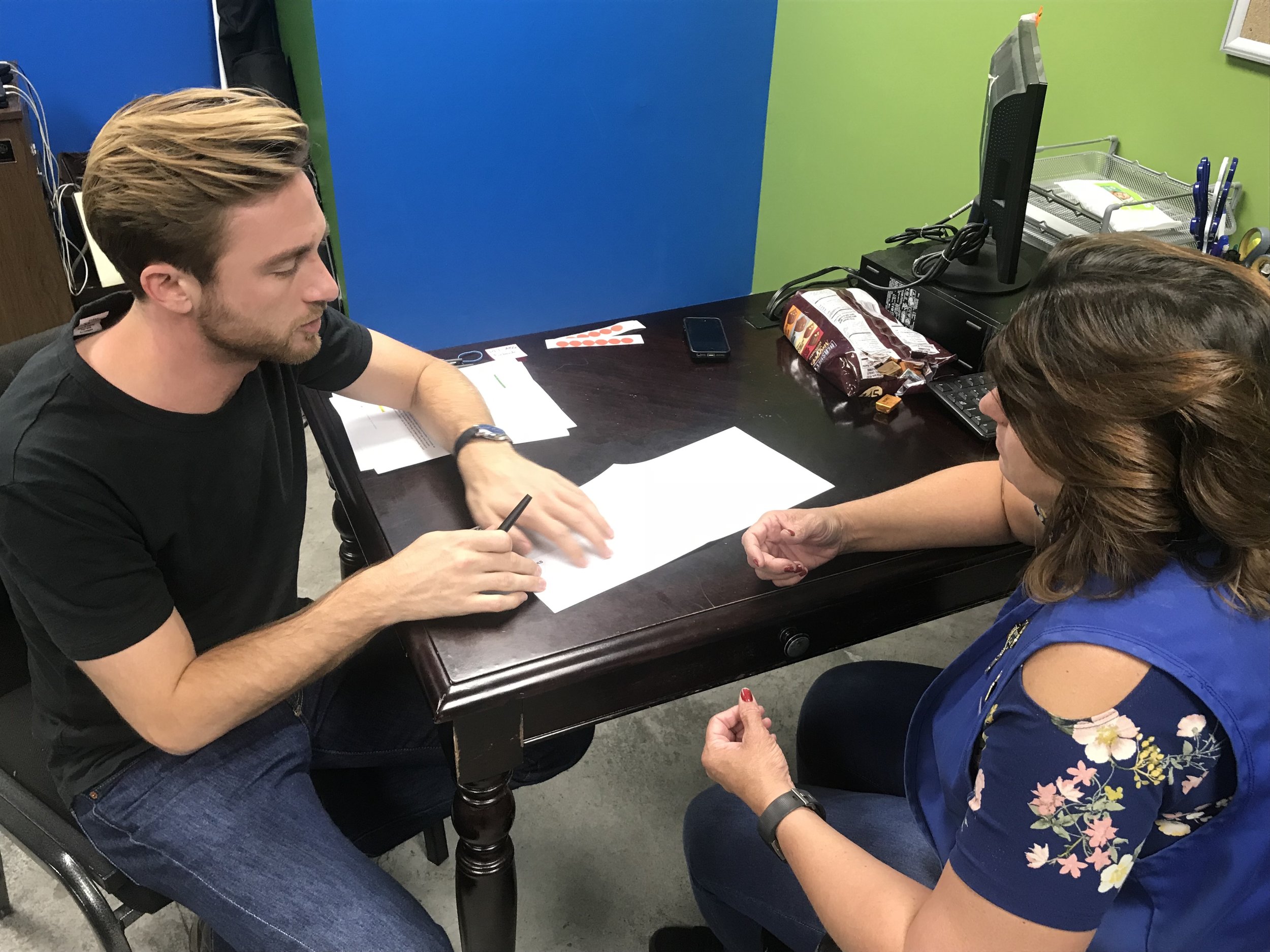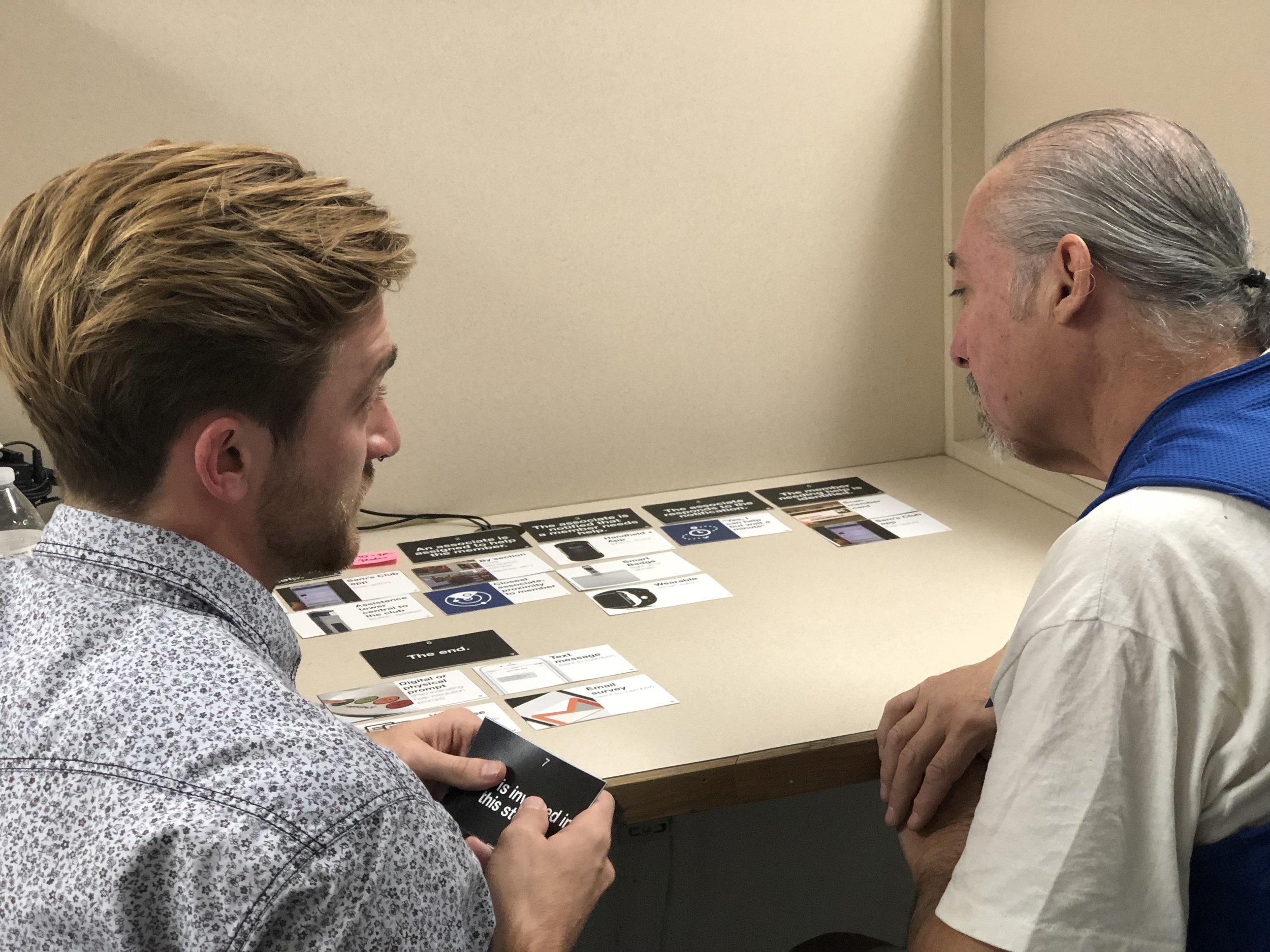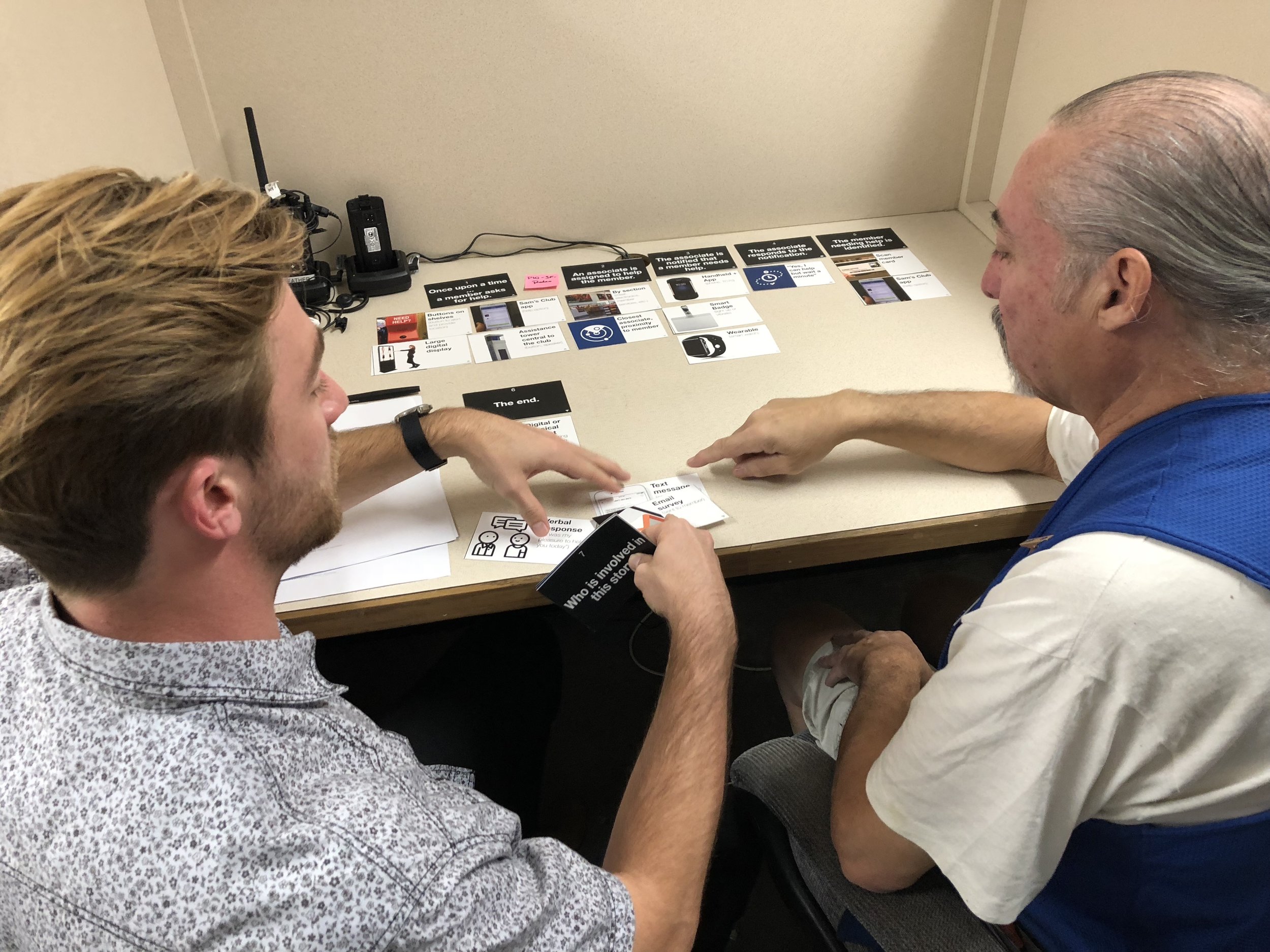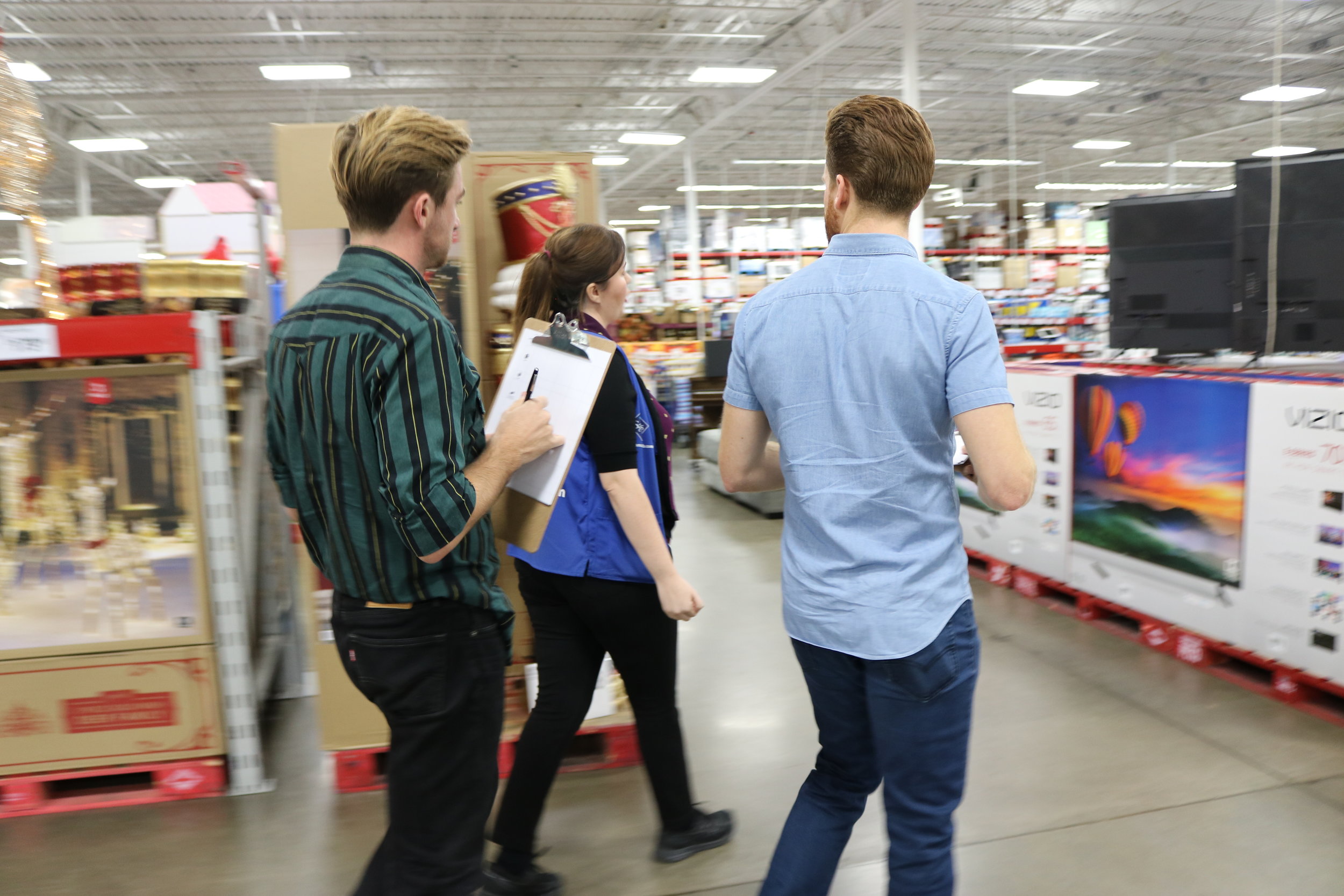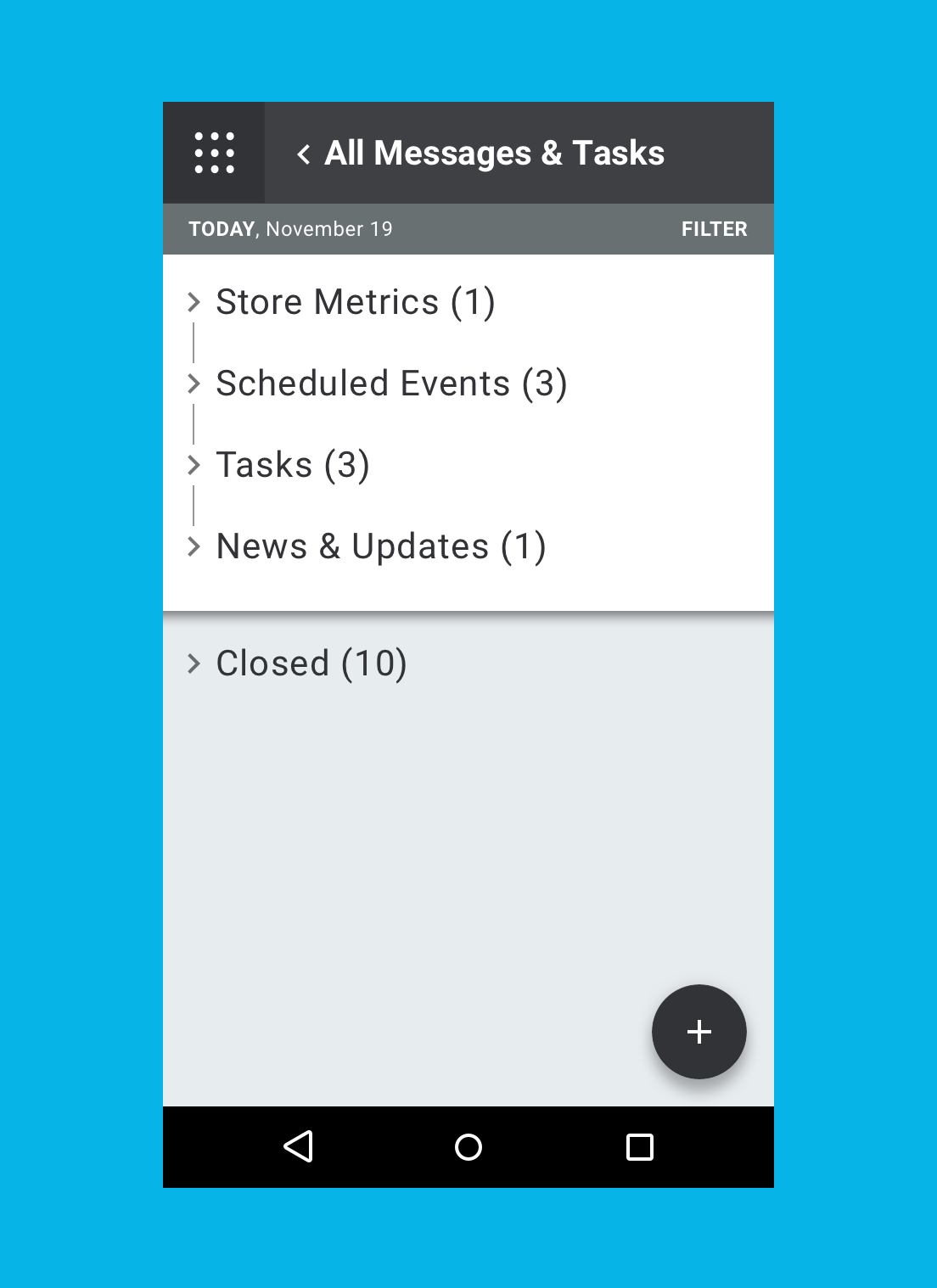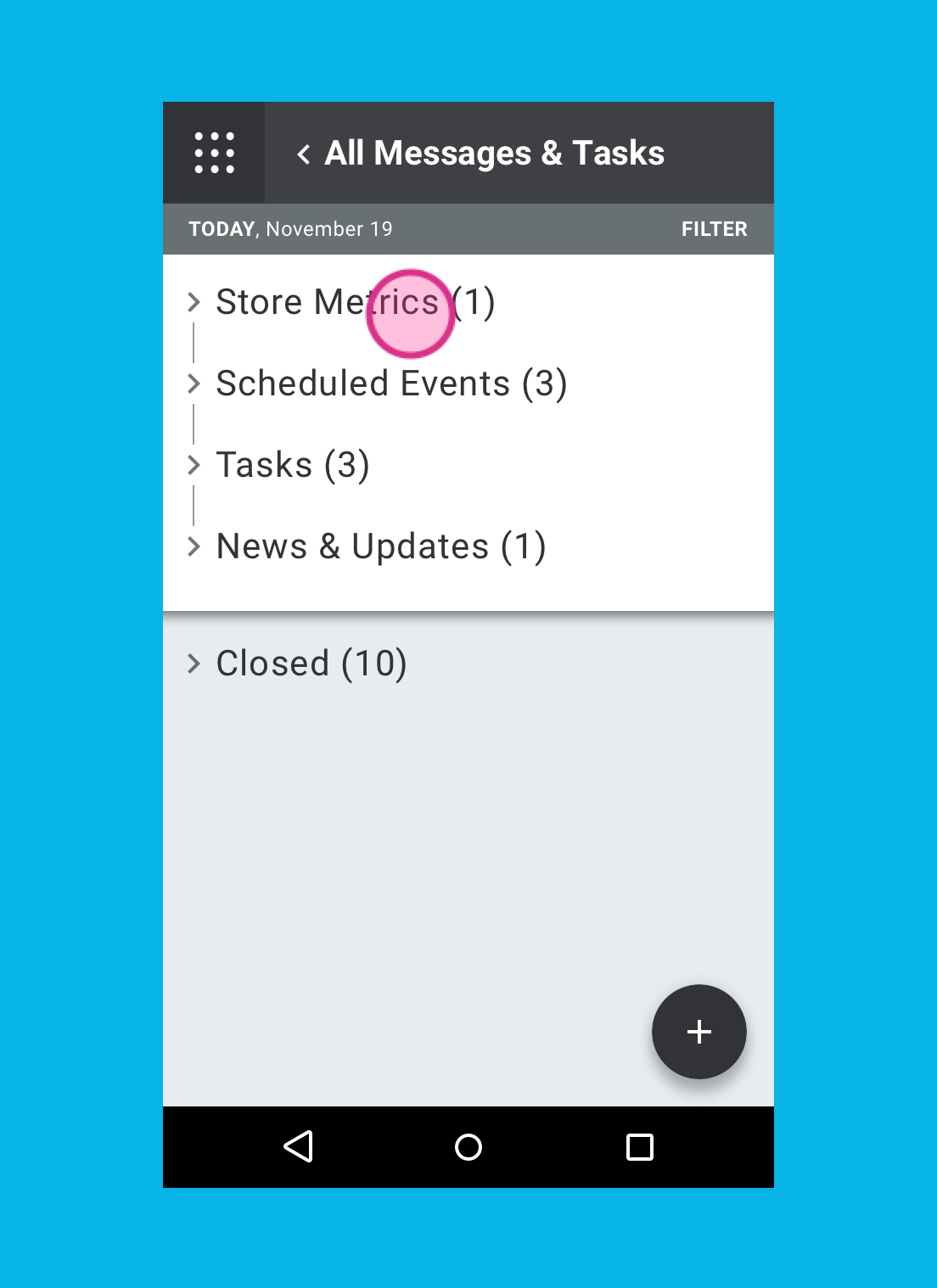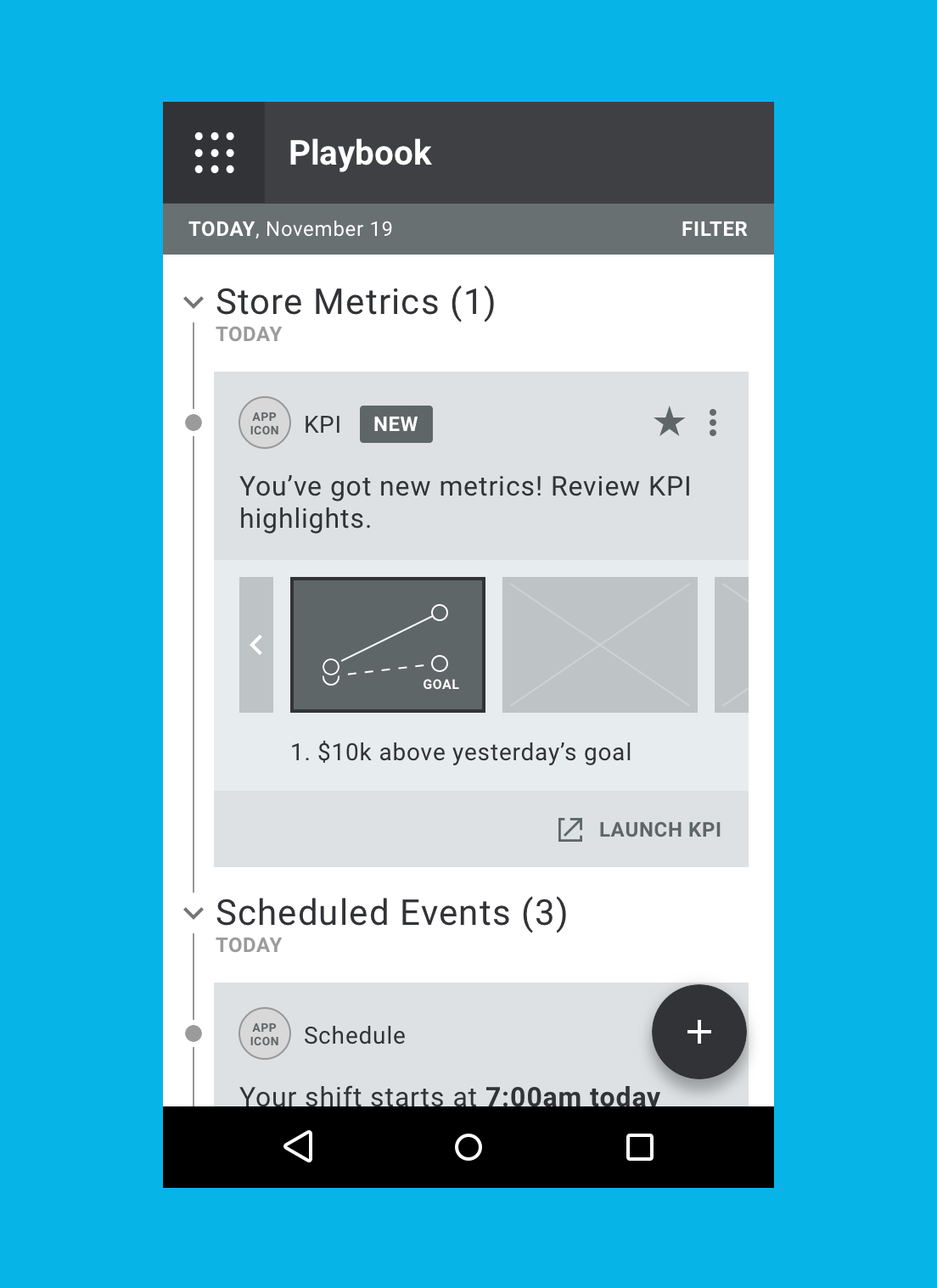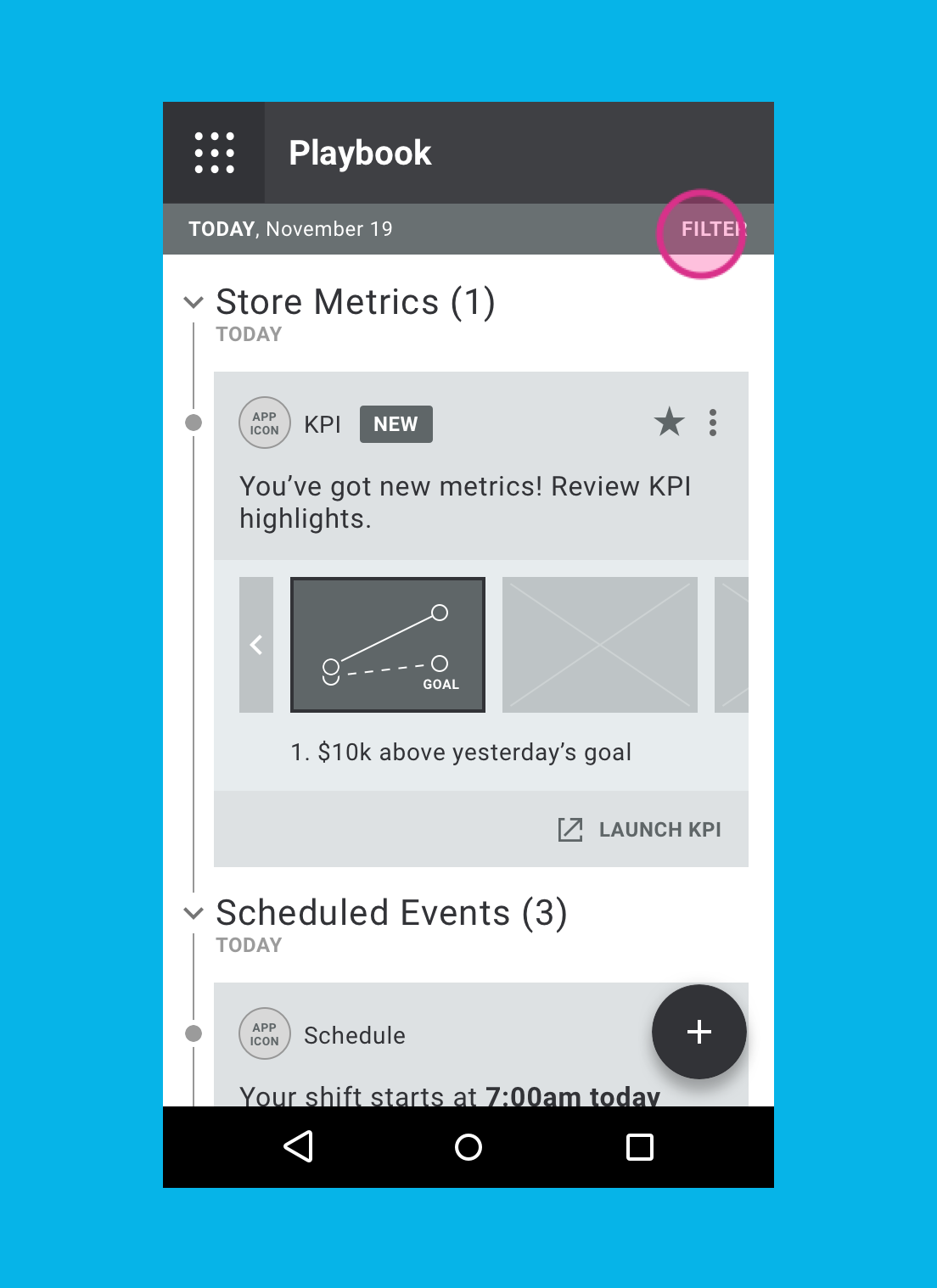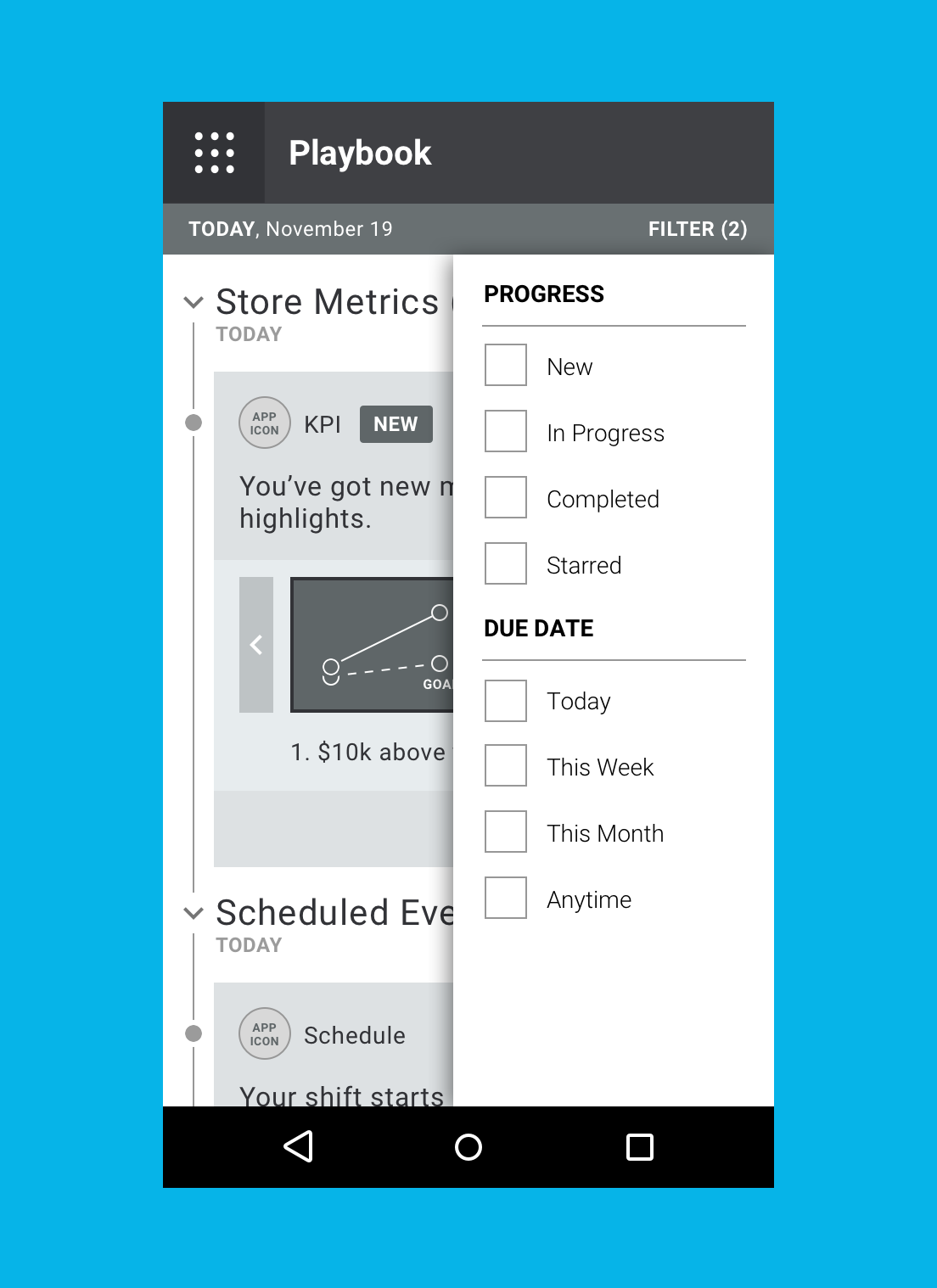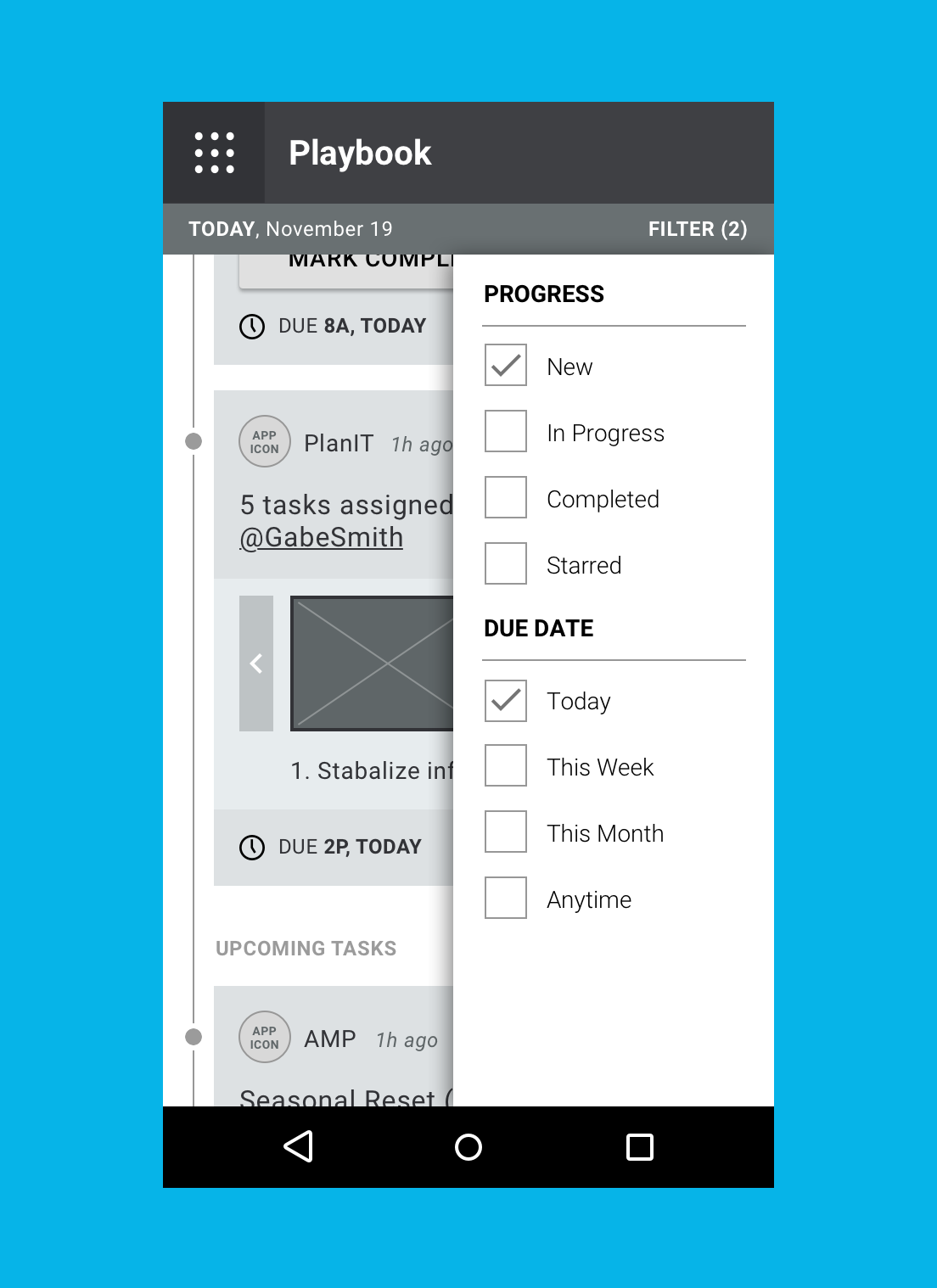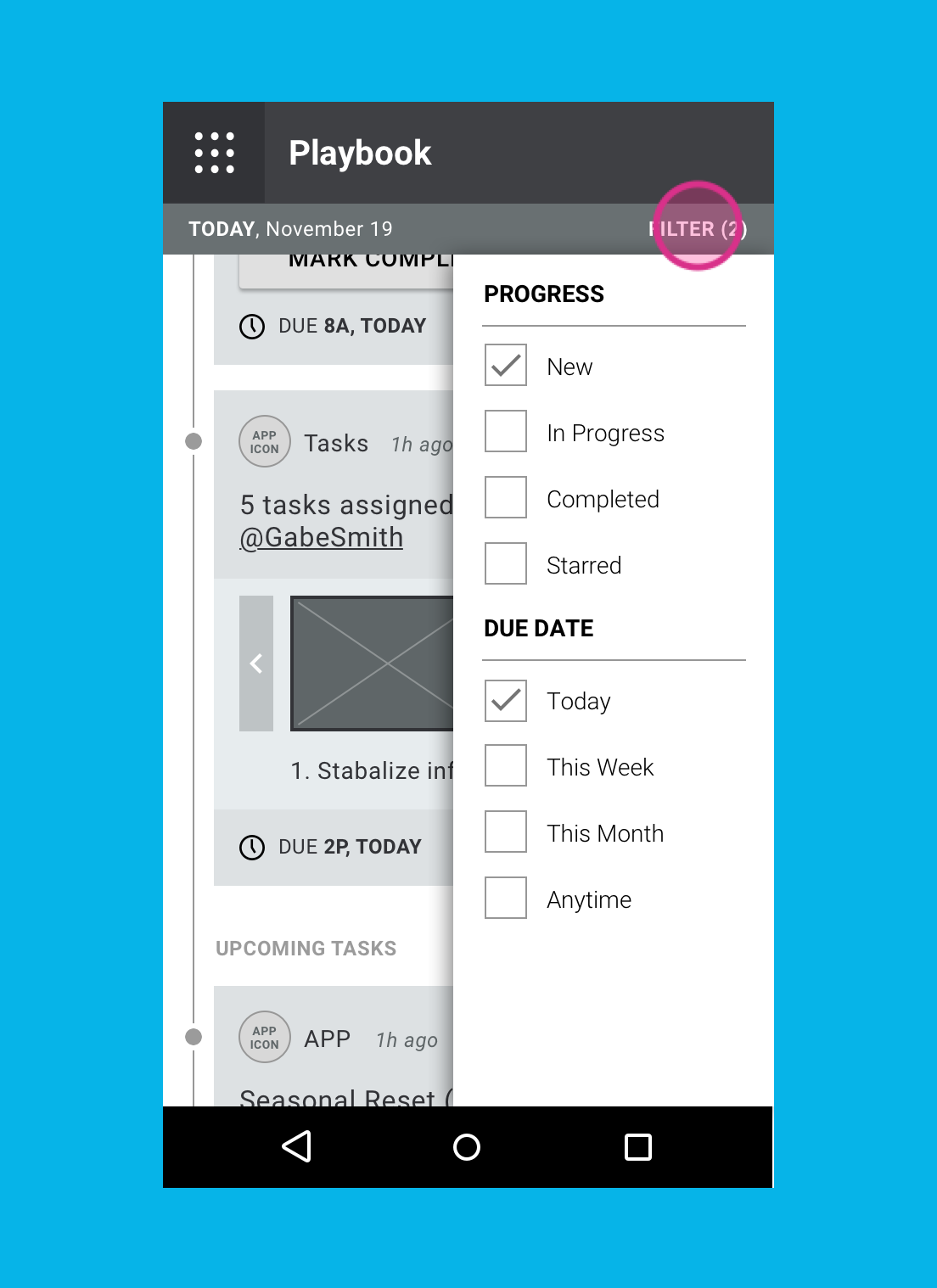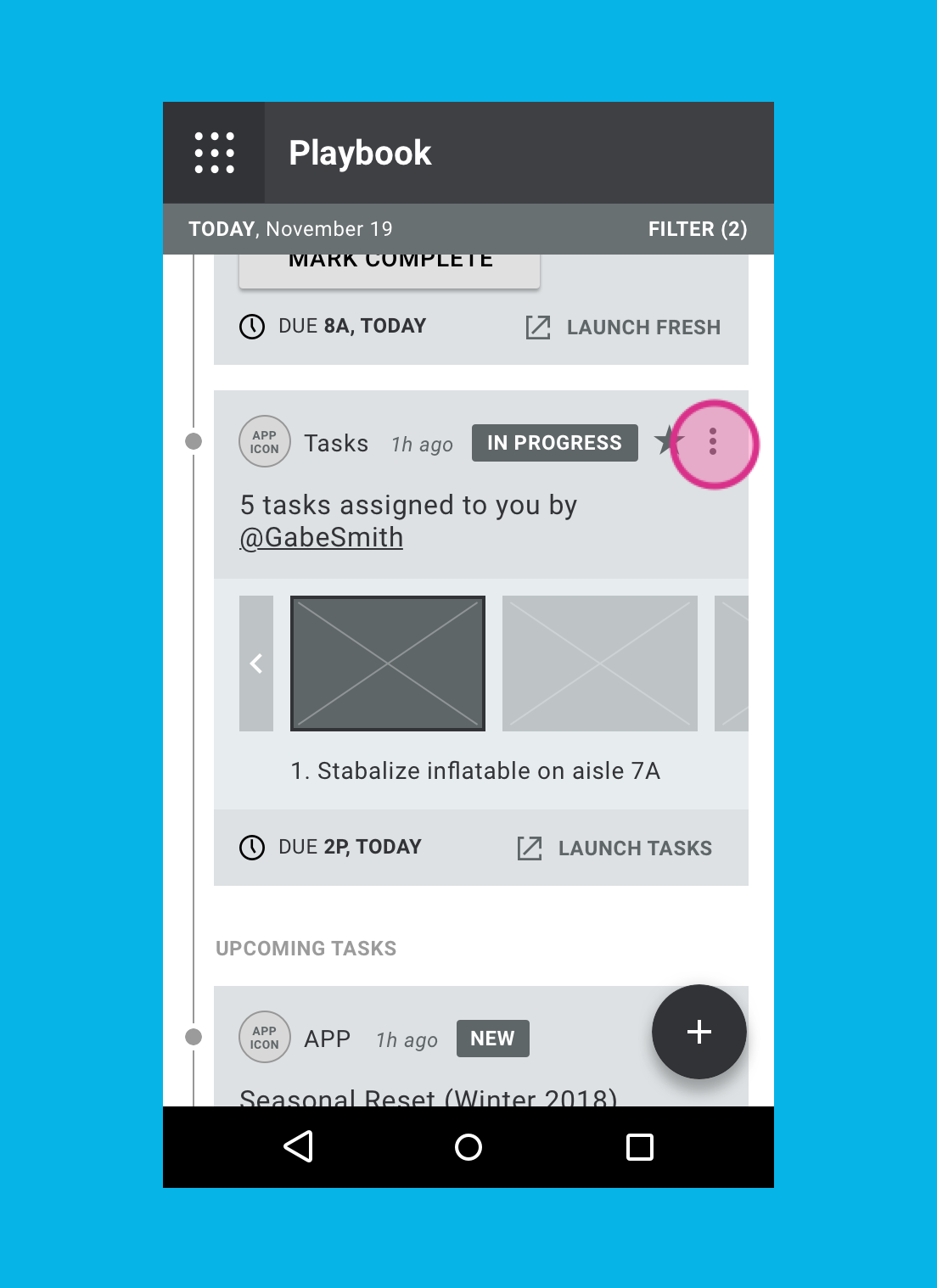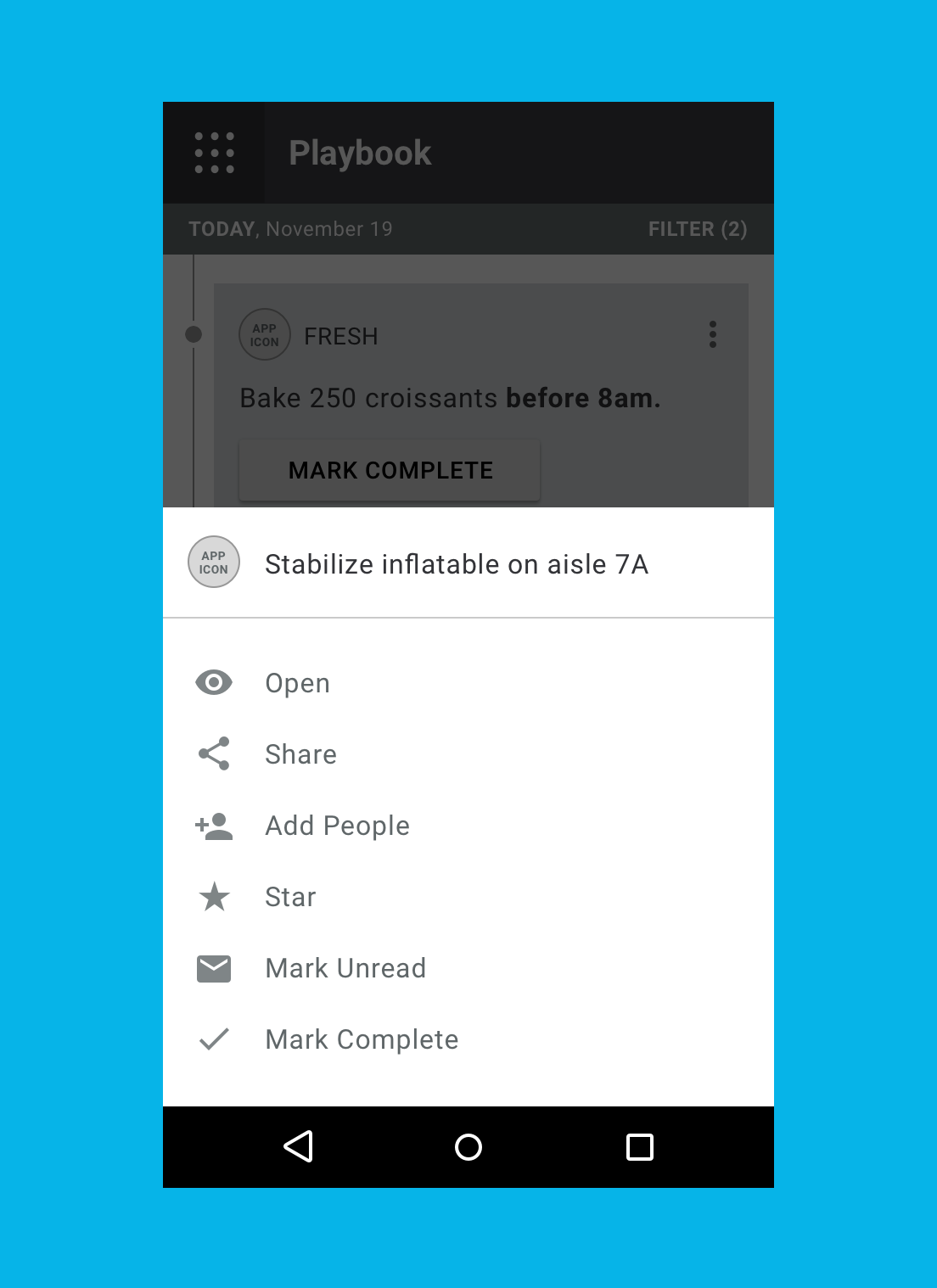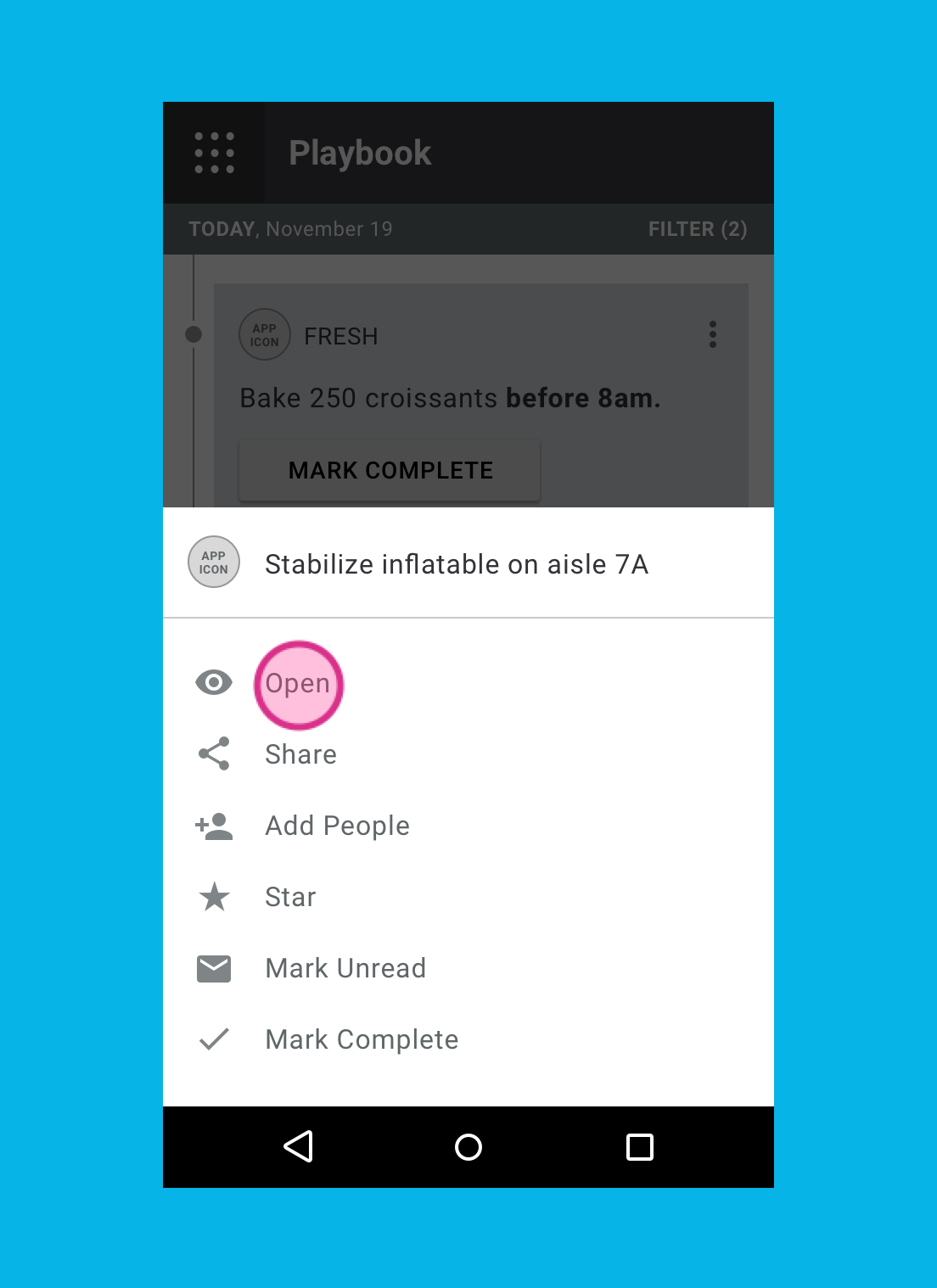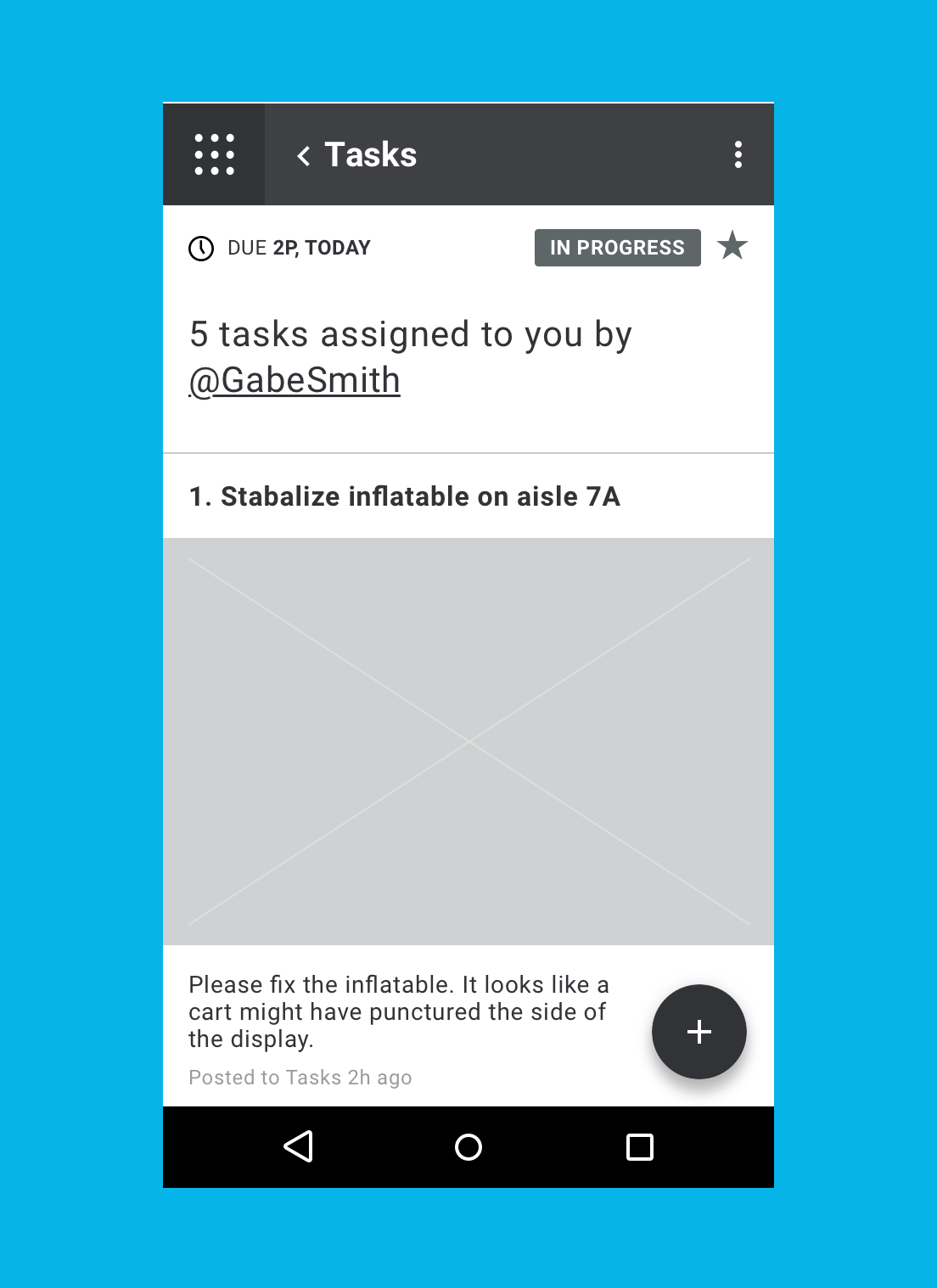REDESIGNING THE WHOLESALE EXPERIENCE FROM WITHIN
Service and Interaction Design of internal tools for employees of a big box retailer
3 projects
_______
Project 1: Unified App
My contribution:
Design Research
Interaction Design
We audited a landscape of 70+ apps that employees use on a daily basis for their roles and created a unified app: a central hub improving accessibility and key functionality of internal tools.
_______
Project 2: Service Redesign
My contribution:
Design Research
Service Design
We were tasked with rethinking the way customers are able to request and receive assistance in a retail warehouse. We created a new customer assistance process including software, hardware, and service solutions.
_______
Project 3: Exit Experience
My contribution:
Design Research
Service & Interaction Design
With the goal of decreasing wait times and increasing the accuracy of cart audits by employees, our team provided solutions targeting the exit flow and an improved digital receipt.

